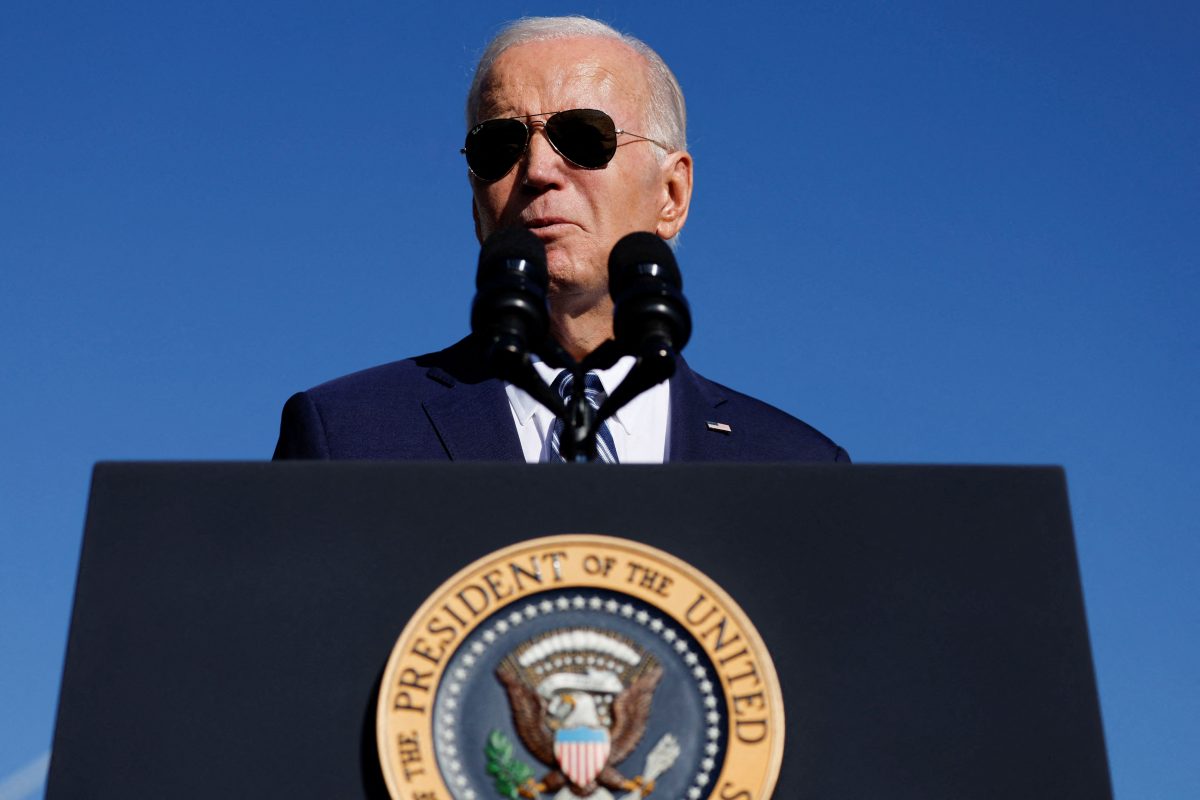PHILADELPHIA (Reuters) – U.S. President Joe Biden traveled to Philadelphia yesterday to announce the recipients of $7 billion in federal grants across 16 states for the development of seven regional hydrogen hubs, advancing a key part of a plan to decarbonize the U.S. economy.
The announcement of the funding to boost manufacturing and blue-collar jobs was held in Pennsylvania – a state that could decide the 2024 presidential election – underscoring the power Biden wields as he spends the upcoming months doling out money flowing from his landmark pieces of legislation that remain largely unknown to large swaths of the American public.
The seven proposed hubs involving companies ranging from Exxon Mobil XOM.N to Amazon AMZN.O were selected, with their projects spanning 16 states from Pennsylvania to California.
The program is intended to jump-start the production of “clean hydrogen” along with the infrastructure needed to get it to industrial users like steelmakers and cement plants.
“I’m here to announce one of the largest advanced manufacturing investments in the history of this nation,” Biden said,” He noted that the total investment will reach $50 billion when taking into account additional investments from private companies.
Some 79 proposals had initially applied for the money.
Hydrogen is produced by electrolyzing water, and the fuel can be considered clean – or low-emission – if it is produced using renewable energy, nuclear energy or natural gas with carbon capture technology attached.
Biden’s administration has set a target to increase clean hydrogen output to 10 million metric tons by 2030, and 50 million by 2050, up fivefold from today – and considers the fuel an ideal option for cutting emissions from tough-to-decarbonize industrial users like steel and cement.
Industry representatives have expressed concerns about the economics of rapid development, however, citing high interest rates, inflation, and uncertainty around permitting and access to additional federal subsidies.
“In any industry there are certainly areas where you see a lot of projects announced but not all are actually built,” said Brian Weeks, senior director for business development for GTI Energy and vice president of government relations for HyVelocity, one of the hub groups that was awarded under the grant program.
The hub selections will now kick off a long process that includes multiple phases, from design and development to permitting, financing and construction.
“It’s not guaranteed that someone selected is even going to make it through negotiations and get awarded the money,” said Jason Munster, who was involved in analyzing the projects for the Department of Energy and is now a hydrogen consultant at CleanEpic.
The hubs selected will serve the Middle Atlantic, Appalachian, Midwest, Minnesota and Plains states, the Gulf Coast, Pacific Northwest and California. The two largest projects include $1.2 billion each for Texas and California – the former an oil giant and the other a green energy leader.
The Texas hub, called HyVelocity, is led by major industry players, including Exxon, Chevron CVX.N, Air Liquide AIRP.PA, Mitsubishi Power Americas 8058.T, Orsted ORSTED.CO, AES AES.N and Sempra Infrastructure SRE.N. Amazon is among the hub’s expected end users.
Amazon, Mitsubishi Power Americas and Air Liquide are also partners in the winning Pacific Northwest hub, joining Fortescue Future Industries as well as local utilities Portland General Electric and Puget Sound Energy.
Each of the proposed projects involve dozens of partners from energy companies to local and state governments.
Administration officials have touted the program as one of the biggest investments ever in U.S. clean manufacturing. The grants are expected to leverage over $40 billion in private investment, generate tens of thousands of jobs and create a national hydrogen economy.
But U.S. hydrogen industry players are also awaiting guidance from the Treasury Department on how to access additional subsidies created by last year’s Inflation Reduction Act. Those rules are expected at the end of this year.
Environmentalists want the Treasury to require that the tax credits, worth up to $100 billion, only go to hydrogen producers that use new sources of clean electricity instead of tapping power already on the grid.
“We need rigorous guardrails to ensure that U.S. hydrogen does not create an emissions mess, and that we are not subsidizing hydrogen that is clean in name only,” said Rachel Fakhry, policy director for emerging technologies at the Natural Resources Defense Council.
Industry groups have rebuffed the idea, saying it would stifle investment.
Erika Taugher, director of business development for hydrogen, Pattern Energy, a developer, said until the Treasury guidance comes out, it will be hard to tell whether new projects will have a chance at drawing financing.
“You can’t model out on returns until we have more clarity on policy,” she said at the Reuters Hydrogen North America 2023 conference in Houston this week.
Most of the selected hubs include the use of natural gas to power hydrogen production, which administration officials said would need to install carbon capture technology to qualify. Carbon capture has yet to be used at scale.

